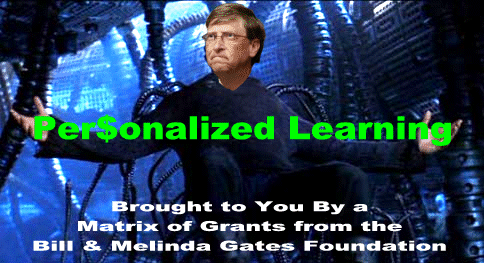Personalized Learning, Surveillance and Counterinsurgency within the State-Finance Matrix
The Role of Big Data, EdTech and Militarized Austerity within America’s Authoritarian Democracy
“The NSA has nothing on the monitoring tools that education technologists have developed to ‘personalize’ and ‘adapt’ learning for students in public school districts across the United States” –Jesse Irwin, Model View Culture
The state-finance matrix defined: Influenced by David Harvey’s notion of the state-financenexus, the state-finance matrix is a highly disciplined neoliberal landscape where state power structures and technologies facilitate and protect the activities and interests of finance capitalism over all else. This matrix provides an insulated environment for financialization via securitization, which simply described, is a process where financial institutions bundle together (illiquid) financial assets – primarily loans – and transform them into (liquid) tradable securities that can be expeditiously bought and sold in secondary financial markets. Within this globalized environment, digital securities trading – including “fictitious” trading, hedging and speculating in derivative markets – generates “phantom wealth”; whereby the exchange of capital, money and currency is detached from material or labor value. In the twenty-first century, debt is the new global currency and is a primary source of (intangible) wealth accumulation.
Rebooting the System for a New Age
Writing in Forbes Magazine in 2013, technology entrepreneur Naveen Jain made an assessment of the historical origins of mass public education by pointing out that, “Our education system was developed for an industrial era.” Jain went on to explain that the U.S. education system,
…today uses the mass production style manufacturing process of standardization. This process requires raw material that is grouped together based on a specific criteria. Those raw materials are then moved from one station to another station where an expert makes a small modification given the small amount of time given to complete their task. At the end of the assembly line, these assembled goods are standardized tested to see if they meet certain criteria before they are moved to the next advanced assembly line.
Jain makes this point not as a critique of education serving the interests of capitalism through the application of the scientific management model of production (Taylorism) to schooling. On the contrary, he does so to make a case that current education reform policies are a continuation of the original mission of U.S. public education as an instrument of social control, yet only being modernized to bolster financialized capitalism. As Jain puts it, “Our education system is not broken, it has just become obsolete.” He goes on to explain:
When I think of all the tremendous, seemingly impossible feats made possible by entrepreneurs, I am amazed that more has not been done to reinvent our education system. I want all entrepreneurs to take notice that this is a multi-hundred billion dollar opportunity that’s ripe for disruption.
The means by which such financial “opportunities” reside by “reinventing” education are made more explicit when Jain goes on to claim, “Rethinking education starts with embracing our individuality…[j]ust think of the opportunities we can unlock by making education as addictive as a video game” by flipping the current model on its head and use “technology to focus on our learners.” Using the same historical context that Jain does to support this argument, the superintendent of Miami-Dade County Public Schools (and rising star in the education reform industry), Alberto Carvalho decreed in 2015, “Unfortunately, for most American students the old factory model of education still applies. This is a recipe for failure and frustration. We cannot address Digital Age needs with Industrial Age education.” Carvalho goes on to claim:
We must leave behind us the days of sorting students by age and instruction by subject. More and more, our 8th-graders are studying alongside 6th-graders of similar ability, interests and readiness. After all, we aren’t grouped by age in the employment marketplace. No one told Mark Zuckerberg he couldn’t be CEO of Facebook because he wasn’t born the same year as Bill Gates.
Jain and Carvalho’s edicts are an integral part of the education technology (EdTech) industry’s marketing narrative, as a driving force and beneficiary of the financialization of public education. Be it venture philanthropists, federal and state policymakers or EdTech executives, the current mission of education reform is to “reinvent” education, propelled by a narrative of benevolent intent and remedied by meeting the needs of financial markets through embracing education technologies. In doing so, the EdTech industry promotes its products as being student-centered, competency-based “anytime-anywhere learning” or more specifically as “personalized learning.” According to its advocates, personalized learning simply means the differentiation of digitized coursework for students based on their different skill levels that allows them to engage in learning activities at their own pace through the use of digital tools. Accordingly, the Gates Foundation claims on its Personalized Learning page, “In personalized learning, the student is the leader, and the teacher is the activator and the advisor.” On its Digital Tools and Content page, the foundation goes on to report that personalized learning Personalized Learning, Surveillance and Counterinsurgency within the State-Finance Matrix | Mythos: Education, Political Economy and Culture:


